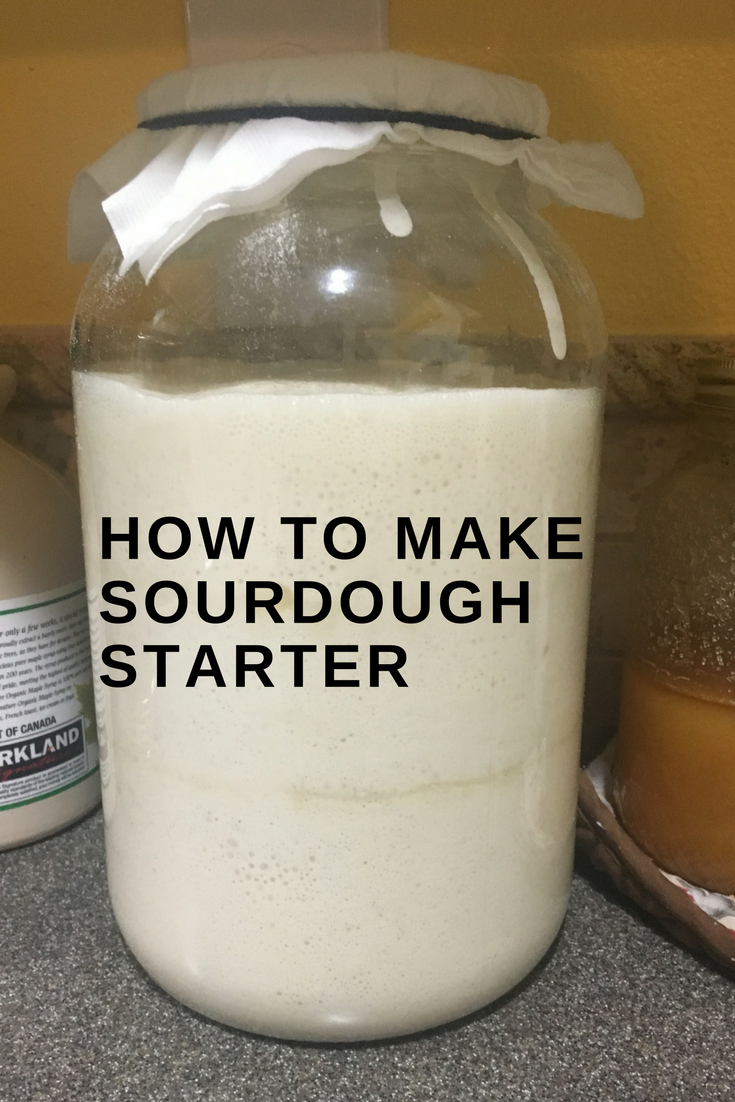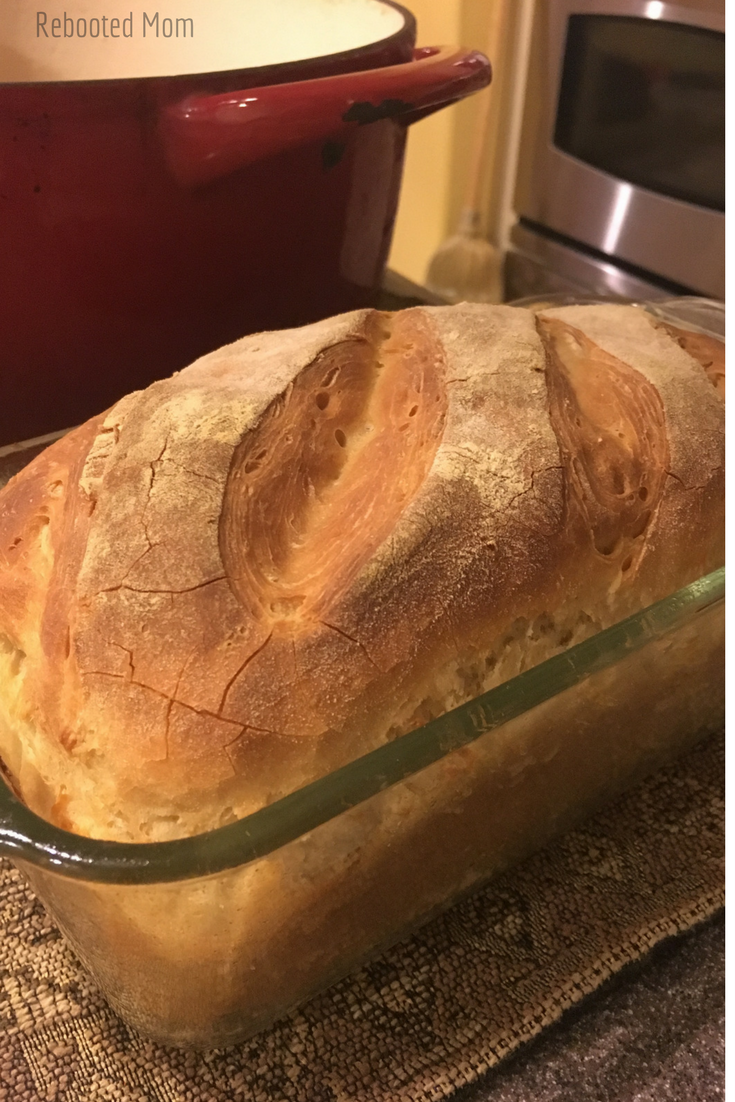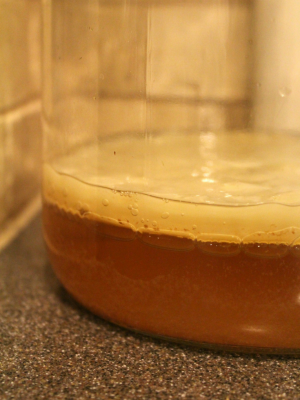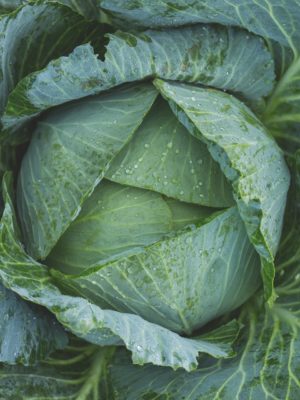
I don’t know too many people who aren’t lovers of sourdough bread – everyone pretty much loves to love it and it’s amazing when you smear it with butter fresh from the oven.
Sourdough is one of the easiest breads to make – you simply make your sourdough starter from scratch, wait a few days, and then take a few more simple steps, wait for the rise, and then bake. It might sound somewhat complicated but it really isn’t at all.
If you are on a gluten-free restriction, you’ll be happy to know that you can make your own gluten-free sourdough bread, too!
Unlike traditional bread, that can be made with just a few hours notice, sourdough requires a few days of advance planning – and I say days because you need a really good, active starter, and that in itself takes 3-4 days to prepare. Once you have that active starter, then you need time to mix the dough, shape the dough, let it rise, and then allow it to bake.
One other thing: traditional bread is somewhat foolproof — provided you have fresh yeast that isn’t expired, it will almost always turn out amazing. Sourdough, on the other hand, may not always go too well on your first try… or, sometimes even your second. I blew through what seemed like dozens and dozens of bags of flour making sourdough bread, in every attempt to make it right. It wasn’t until a year or so ago that I actually succeeded.
Please, stick with it, no matter how discouraged you get. It does get easier. I promise!
Prepare Beforehand
Thinking back to my first loaf of sourdough, it was dense, hard and very dry. I tried making that same recipe over, and over and over again – over time, it improved, but nowhere near what I can do today. We tried to use the dense loaves, even though they were very very hard but I wanted nothing more than to be successful at this bread making thing.. so I continued to work at it.
Now that I have made every attempt to perfect my sourdough, I’m sharing some things that you might want to keep in mind through the process:
Making the Starter
When you bake sourdough, you need to use a starter that is at its peak — if you don’t currently have a starter at home, you can make your own starter, and feed it once or twice a day. I usually feed mine twice each day (morning, and night). Cover in between feedings with a napkin, handkerchief or cheesecloth to avoid debris from getting inside.
- All you need is three ingredients to make a sourdough starter: flour, yeast and water.
- Only use glass or ceramic bowls along with wooden spoons when making sourdough. Avoid using metal or stainless steel – sourdough is made “sour” by acids, and acids will react to metals. I love using a tall glass jar that allows room for the starter to grow and expand.
- Use warm water, avoid hot water. Aim for a water temp of 90-100 degrees.
- Once your starter is mixed, loosely cover & allow to sit on your counter top; The sourdough will start to bubble and over the next 24-48 hours, it will expand. After 48 hours, feed that starter 1 C. flour, 2/3 C. water and 1 tsp of sugar. Mix well, and re-cover. You should see the starter expand over the next few hours, then go back down and get bubbly again on the top.
- After 48-72 hours, the starter is ready to use. I find that the starter is “best” used about 4 hours after a recent feeding.
- If you don’t plan on using the starter at that time, place in the refrigerator and feed once per week (1 C. flour, 2/3 C. water and 1 tsp sugar). Once you plan on using it, remove from the fridge and allow to come to room temp. Feed that starter (above ratio), then allow to sit for 4-5 hours before using.
Helpful tools for making sourdough:
- Sourdough Jar
- Sourdough Spoon
- Cheesecloth or Frugal Cheesecloth Alternatives
- Sourdough Starter Recipe (see below)
Ingredients
- 2 C. all purpose flour
- 2 C. warm water (90-100 degrees F)
- 2 1/4 tsp active dry yeast
- 1 C. flour
- 2/3 C. water (90-100 degrees F)
- 1 tsp organic cane sugar
Instructions
- In a tall glass jar or bowl, combine all three ingredients and stir well with a wooden spoon. It may take some time to come together and the mixture will initially be very thick.
- Loosely cover the jar with cheesecloth or an alternative, and allow to sit for 48 hours. Through that time, stir 3-4 times with your wooden spoon.
- After 48 hours, the sourdough will have fermented enough to where there are bubbles on top. Feed once, or even twice daily with 1 C. flour, 2/3 C. water and 1 tsp sugar. Stir well with your wood spoon and recover.
- After day 4 or 5, your starter should be at it's peak. Use your starter in one of your favorite recipes, or, cover tightly and place in the fridge. Make sure you remove your starter from the fridge at least 24 hours in advance before using in a recipe.

Once you have your sourdough starter going, it’s time to make sourdough – stay tuned! We’ll have our favorite simple sourdough recipe up next!







Help! I need help with a starter! I have recently decided to get back into sour dough bread making. The last two times I tried I was working full time and gave up too easily. Now that I am at home full time I’m dying to try again. That being said I talked some of the ladies at the Amish Bakery into giving me some of their starter, but they weren’t too willing to answer questions on what to do with it haha. Now I have starter but don’t know what to do next because I don’t know where it is at in its process! Help!
Don’t give up 🙂 It’s really not too hard.
So — there are two ways you can do things. Flour and water, and then Grapes, Flour and Water. I prefer to use grapes.. because it is a faster “starter” to get going.
If you do the grapes, just grab a half pound or so at the store. Remove the stems, rinse the grapes, cut in half. Put them in a large glass jar. Mix 2 C. flour with 2 C. water and pour that in with the grapes. Stir it all around, then lightly cover (coffee filter, cheese cloth, etc.)
Let that sit for 3-4 days — don’t stir it, don’t touch it! It’ll start to activate from the bacteria on the grapes. After 3-4 days, use a slotted spoon and remove the grapes (put in the compost). Then feed the starter daily — 1/2 – 3/4 C. flour + 1/2 – 3/4 C. water.
Stir it in with a wood spoon.
The next day, discard some and keep feeding.
When I’m not making bread for a few days, I’ll put mine in the fridge (covered). I pull it out the night before… around 8 pm. I dump the cloudy liquid off the top. Then I feed it before I go to bed.
Then I get up in the morning, and I discard a bit (1/2 C. maybe), feed again.
Then I start my sourdough around 11 a.m.
You can always ask me for help.. I’d be happy to help you get it going again!
Why discard some of it?
When using the word discard. That is the part that you use in your recipe. Sometimes you might need to add some flour sugar and water to boost it up
Hi I’m going to try to make your sourdough starter, my question is if I used grapes I dont have to use dry yeast correct. I’ve only tried doing a starter once before and it was a fail and my husband has been telling me to try again , however I have know clue what I’m doing .
Exactly right! You don’t need to use yeast if you have a proper starter. Don’t get discouraged. It took me a long time before I got it right too… it wasn’t something that happened immediately. I got discouraged often, and gave up many times.
Keep at it — once you mix the grapes with the flour/water, cover lightly and let it sit for a few days. Then strain the grapes out with a spoon, and carry on with the starter. Feed it 1-2 times a day (equal parts flour and water)… discard a little before each feeding. Keep that “discard” in a jar, in the fridge. You can use it for recipes (pizza crust, banana bread, etc.) Once you discard, feed the starter, then stir well, cover, and 4-5 hours after feeding it will be at it’s “peak” for using. I’m always here to help!
Cheryl, thanks for the info! I haven’t started yet, but it’s great to know your out there willing to help!
Hi Sheryl… ok, just got my new jar and am ready to start my sourdough starter!! I am excited!! But… I don’t have a recipe for the bread. I want to do exactly what you have done to make sure it turns out great!! Could I get your recipe?
Thanks so much!
Melinda
Yes yes you can! I have several recipes, so I’ll let you decide what works best given your situation. Here’s one — you can sub water or whey for the beer if you wish:
https://www.rebootedmom.com/sourdough-beer-bread-recipe/
Or… this other one (below) is the one I rely on most of the time and it’s not (yet) on my blog because I haven’t had time to put it up. If you decide to take this route, and you get stuck, just find me on FB and message my page and I will help as much as I can.
Adapt the times to fit your schedule, this is a very loosely written recipe!
1. Feed your starter about 7-8 a.m. Allow it to do it’s thing for 4 hours.
2. At 12 pm, mix the following in the blender using the dough hook:
943 grams all purpose flour
641 grams water (75 degrees in temp or so) or, beer, your choice
Mix roughly… cover with plastic wrap. Let it sit for 1 hour.
3. At 1 pm, to the dough above, mix:
50 grams water
184 grams active sourdough starter
Any additions: roasted garlic, jalapenos, etc.
Mix that just until combined (1-2 minutes) using the dough hook. Cover with plastic. Fold and stretch the dough – which means pull it up from the bottom and over the top. Then turn the bowl, do that again – repeat North, South, East, West. Put the plastic back on. Repeat this every 30 minutes for 2 hours.
Then cover with plastic wrap again and allow it to sit for 3 more hours – at the end of that three hours, the edges may have some bubbling activity – that’s good!
3. Turn out the dough on a lightly floured surface. Divide in half. Shape each half into a round loaf – you might have to fold over and up to shape into a round loaf. Place your loaf seam side “up” in a lightly floured banneton or bowl (I got my wood bannetons on Amazon). Cover the banneton’s with a plastic bag like a ‘tent’ over the top. Shove them in the fridge for 14 hours or so to proof (this helps them have a nice rise when you bake it!)
4. One hour before baking, put your dutch oven in the oven with the lid on – 485 degrees F. After that hour, carefully remove the dutch oven and the lid. Set the lid to the side. Put a layer of parchment on a flat cookie sheet pan. Place the pan with the parchment over the top of the banneton and flip the banneton over to get the bread on the parchment. (The bread won’t look all that puffy, it’s rather flat!) Lift the edges of the parchment into the hot dutch oven and quickly score the bread — slash it like a pound sign. Put the lid over the dutch oven and carefully put in the oven.
5. Bake the bread at 25 minutes at 475 degrees F. Open the oven, remove the lid, and bake 20 additional minutes at 450 degrees F. Remove the bread and allow to cool before slicing.
Hope you find this helpful.. I make this exact recipe 2 times a week for 4 loaves. It has never failed me!
I have been practicing with a recipe very similar to this. My results are disappointing because the bread is heavy and moist. The crust, however, is beautiful, and the rise is … just okay. What do you think is the solution for heavy, wet dough?
You might try removing the lid sooner to allow the moisture to evaporate
Hi! Thanks for posting this! Can I half this recipe without altering the results?
absolutely you can!
How long does the starter last? Recipes I’ve seen call for using a portion of starter, and I remember my mom sharing bread starter with friends. How do you know if it’s gone bad?
Thanks!
Sourdough starter lasts indefinitely — I keep mine in the fridge. Then I remove it the night before I want to use it and feed it 1-2 times. I always keep the discard in a separate jar and refrigerate it, that way I can use it when I need to. If you leave your starter on the counter and don’t feed it then it can definitely go bad (and you’ll know because it’ll grow mold on the top).
How often do you feed it after the initial 5 days
If you plan on using it regularly, you can feed it daily (or even twice daily). If you don’t plan on using it regularly, then tuck it in the fridge. Then pull it out the night before you want to make bread, discard a little bit (1/4-1/2C) and then feed it once or twice to get it “going”.
So I made the starter and it looks a little watery but rises well after feeding. After coming back and reading comments I realized that the original instructions didn’t include discarding part of the starter when feeding. Was I supposed to do that with each feeding when I was making the starter? Or just once I start feeding now that the starter is complete?
Does this work with whole wheat flour too?
Absolutely does!
Sheryl,
In your recipe above, you don’t mention anything about discarding some of the starter before feeding. Did I read that right or am I missing something? Help!
You can discard a little before each feeding. I usually discard a small small amount. I save the discard in a jar in the fridge, and I use it to make crackers or sourdough banana bread (with discard). I have recipes for those on this blog too. So delicious!!
Hi, my starter is on day 2, should I feed it? Also, question about discarding, is it the water on top or do I actually have to get rid of the mixture? Help
Yes — you’ll want to feed it. So when you get ready to feed it, simply pour out (discard) 1/4 C or so, and then add in equal parts flour + water and stir with a wood or plastic spoon. Then cover with the lid. You can keep the discard… I use mine to make sourdough pizza crust with discard. It’s great! I keep it in a jar in the fridge and when I have enough I make pizza.
Can the starter be frozen or saved in any way?
Sure can – what I do is cap and refrigerate if I don’t plan on using it for a while. When you decide to use it again, remove from the fridge.. there should be a pool of liquid on the top. Pour that off then discard 1/4-1/2 C. then re-feed it once or twice to get it re-energized.
I did your sourdough starter and it’s working great. My first loaf came out perfect, only I like more sour taste. Can this be accomplished? Also, my second loaf was wet on the bottom; I let it sit on the counter with paper towels overnight and it was fine. The bread tasted really good and it makes a beautiful loaf.
Hi ladies,
I enjoyed reading your experiences!
I learned from a friend in Kenya Africa ,that once you mix your bread dough, you can let it set in the refrigerator for 3-4 days to achieve a gluten free and almost carb free bread! You need to wait 5 hrs or so,for it to rise and become room temperature,and then bake it.
(That’s with letting it set in the fridge first, for 72 hrs.) My friend says two pieces of this sourdough bread is equal to an apple!17
Carbs!! Do you agree with this to be true??
Yes absolutely dilute – about 2 Tablespoons (1 oz) per gallon of water.
Every time I feed my starter it would overflow the glass jar. Is that normal?
Yes — you’ll prob need a bigger jar. I started with a quart canning jar and every time I feed mine it overflows a few hours later. So now I use a one gallon glass kombucha jar.
In starter what kind of flour all purpose and what else I am confused please explain sand me video also if you have
I am sorry I don’t have a video. I use equal parts purpose flour, and water.
They say that doing the same thing over and over expecting different results is a sign of insanity. I’ve been trying to get a starter going fir months with no success. I’ve tried yours and many others. I’m ready to pitch all this stuff in the trash. Any suggestions please?
TIA
Bill
Don’t give up.. It took me forever to get mine to “work”. If I had to guess I’d say I did it off and on for a year. Chucked many loaves of bread… didn’t ever think I could get it to work. I was using non-organic all purpose, bleached flour. I happened to get organic flour one day on a whim thinking that might work better and that’s what it was (at least for me). So now I use Simple Truth (Fry’s/Kroger brand), organic, unbleached flour. If I can’t get that, I’ll get Bob’s Red Mill Organic, Unbleached All Purpose. Not sure if that helps.. but boy did I get discouraged. I never gave up though.. it was something I wanted to make work.
Help! I mistakenly added a cup of sugar to my starter instead of a tap. Can I fix it?
Judy – can you try to scoop out the sugar? Did you already mix it in? If you already mixed it in, you’ll have to toss the starter and start over :(. If it’s still laying on the top and you haven’t mixed it in, try to gently remove the sugar with a spoon little by little.
Brand new at this. How much starter should I be discarding when I feed it and do I discard at every feeding? Can’t wait to see how it turns out!
Thank You!
I discard about 1/4-1/2 C each time. When I first started “feeding” my starter, I would feed and discard once a day. But the more I started using it, It was twice a day.
Hi 👋 my first time at doing this decided to go with your recipe . I’m stressing out lol I just mixed everything together and within an hour everything is overflowing just won’t stop I need help please do I start over or their is something else I can do ?
I would try doing smaller amounts at first. When I first started, way back, I got very over zealous and did 2 C. of water + 2 C. of flour and quickly found out that my jar could not handle that much. I would start over, but keep it small until you get the hang of it (try 1/2 or 1 C. to the same amount of liquid). Don’t stress though… it’s not meant to be complicated! I used to stress too.. believe me! It took me a while to actually get comfortable (and lots of failure!) but don’t give up!